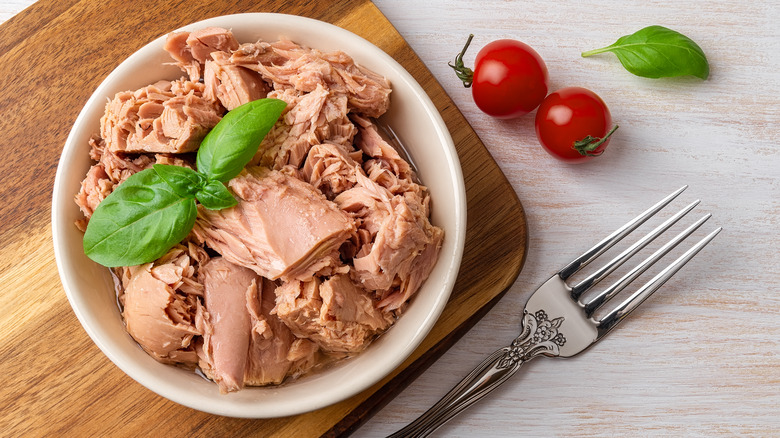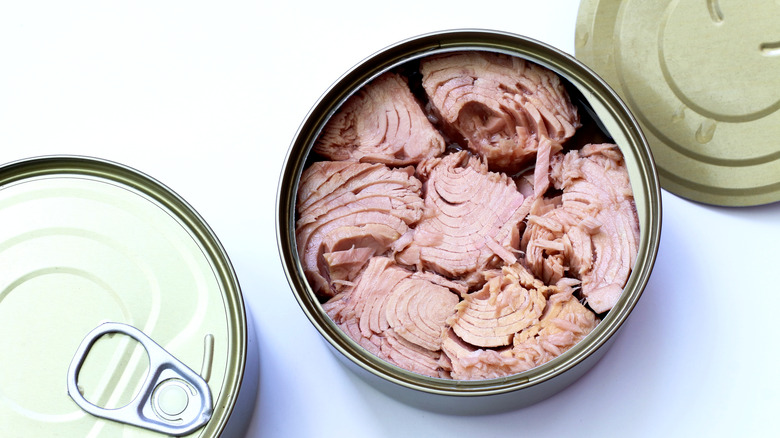Why You Should Fully Drain The Tuna Can For Tuna Salad
There's nothing that says you absolutely must drain tuna before transforming it with your favorite tuna salad recipe. After all, it comes ready-to-eat and FDA-approved in a convenient aluminum can packed with delicious nutrition, including a power punch of vitamins, protein, minerals, and heart-healthy Omega-3 fatty acids, per WebMD. There's nothing wrong with eating the entire contents of the can or mixing it straight into your tuna salad, liquid and all. However, there are a few things to consider first.
Canned tuna is packaged in oil or water and typically comes from one of five species: albacore, skipjack, yellowfin, bigeye, or bluefin (via Seafood Health Facts). This is where the subtle differences arise when deciding whether to separate the fish from its packing liquids. From texture to nutrition or to avoid the dreaded soggy sandwich, the evidence leans heavily toward fully draining that cute little can before creating your tuna salad magic.
How draining canned tuna impacts tuna salad
First up is water-based canned tuna, generally known as chunk light and often made with skipjack mixed with yellowfin, explains Seafood Health Facts. This is the lightest, flakiest type of tuna that's an excellent choice for tuna salad, notes Clean Plates. Because it's packed in a watery broth instead of oil, it has fewer calories — but it also contains a high amount of salt. Draining the liquid removes excess sodium, which is beneficial for salt-conscious eaters. And, perhaps even more important for tuna salad sandwich fans, removing that briny water will lower the chances of a soggy sandwich saga on your plate.
Oil-based canned tuna fish is more likely to mix well with other tuna salad ingredients, thus lessening the texture challenge. But it's still quite moist, and the oil retains more of the fishy flavor. Then there's the calories, a whopping three times the amount of water-based tuna, according to Food Network. Draining the oil cuts down on excess calories for weight-conscious consumers, but there may be a resulting loss of nutrition. One theory knocking about is that the beneficial fats in tuna may bond with healthy olive or avocado packing oils, which are therefore eliminated when you drain the can, explains Clean Plates.
Regardless of which canning method you prefer, it's a good bet you don't want watery tuna salad. So weigh the benefits and implications of removing the excess liquid, and enjoy that down-home goodness in a bowl.

